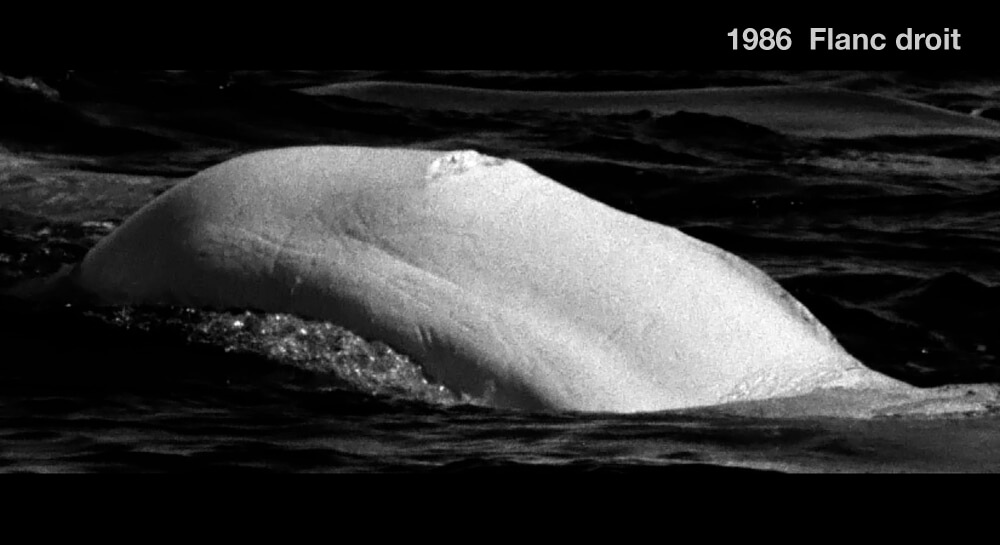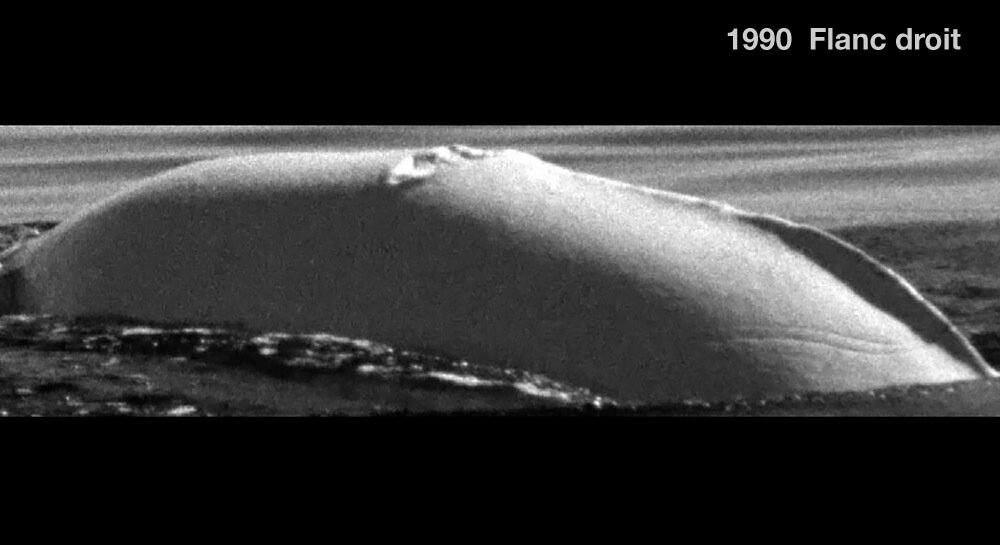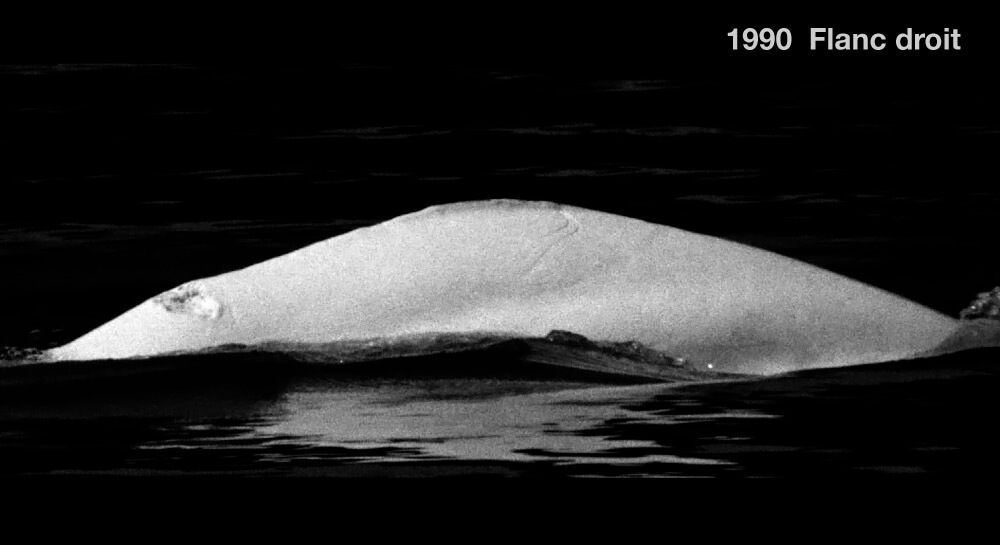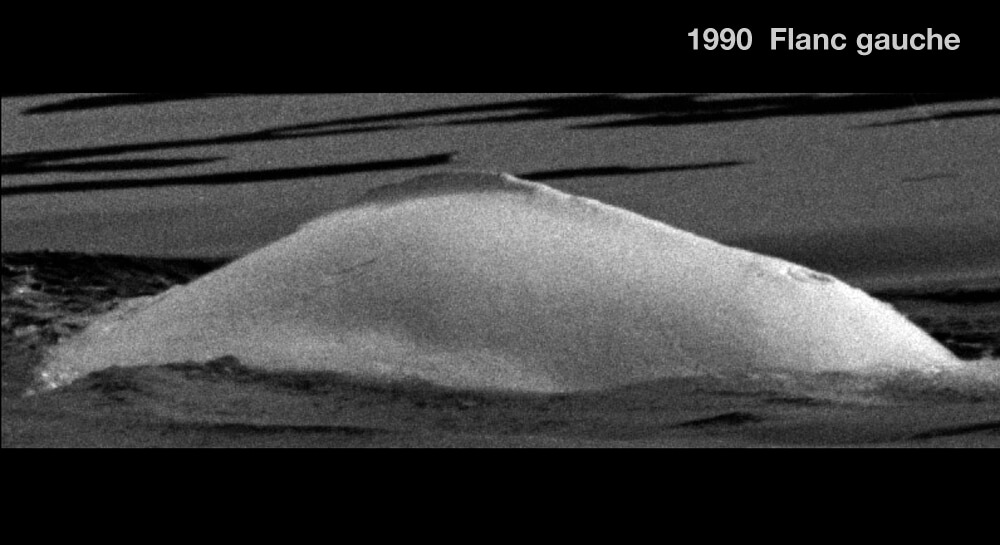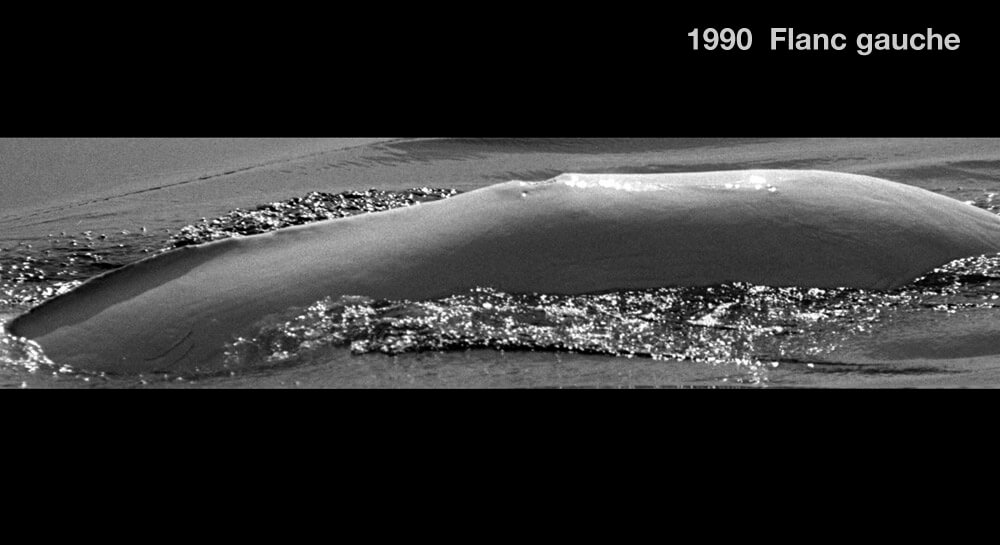Blanche-Neige
Beluga


Adopted by Peinture Internationale
-
ID number
DL0024
-
Sex
Presumed male
-
Year of birth
Before 1968
-
Known Since
1980
Distinctive traits
Blanche-Neige has a large scar on his peduncle, visible on both sides. On the left side, just below it, is a small dot. Another distinctive feature is the irregular dorsal ridge.
Life history
The first time Blanche-Neige was photographed, in 1980, he was already immaculately white. He was then at least 12 to 16 years old.
According to his habits and associations, Blanche-Neige is part of the network of males that frequent the downstream sector, between Tadoussac and Les Escoumins, of the belugas’ summer distribution area.
St. Lawrence belugas, like Blanche-Neige, belong to the southernmost population of belugas. The other populations are found in the circumpolar regions of the Arctic. Physically, St. Lawrence belugas are smaller than Arctic belugas, and do not moult seasonally. This is due to their permanent residence in the estuary, whose waters are more temperate and slightly less salty than those of Arctic belugas.
Observations history in the Estuary
Years in which the animal was not observed Years in which the animal was observed
Latest news
Sponsor
Peinture Internationale adopted Octave, Aile Joyeuse, Blanche-Neige, Oreillette, Patte d’Oie and Vagabonde (1988).

